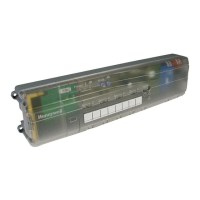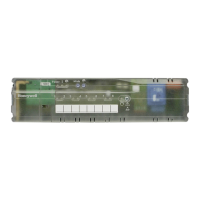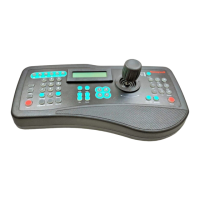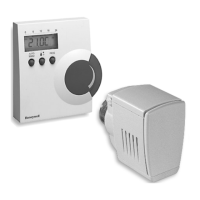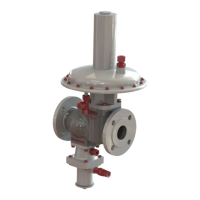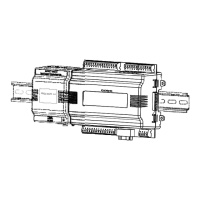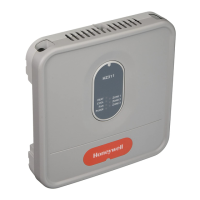Design and Implementation of HC900 Control System - Allowable Function Blocks for Process and Safety Functions
Revision 1.9 HC900 Process & Safety Controller Safety Manual 35
01/14
Stage
The Stage function block provides differential On/Off
control and is typically used to monitor pressure and
flow for controlling pumps and operating valves.
There are four individual stages grouped together in
the function block. The block monitors from one to
two analog inputs (PV1, PV2) which are common to
all four stages, compares them for each stage by a
configurable comparator, and provides On/Off control
outputs for the four stages based on configurable
setpoints for each stage. Each stage can be
individually enabled and forced ON or OFF
(OVON/OVOFF). Previous interlocking prevents a
stage’s output from turning ON until the previous
stage has turned ON. Next interlocking prevents a
stage’s output from turning OFF until the output of the
next stage in sequence has turned OFF. Interlocking
is provided for stages where the output of the stage is
dependent on the state of the previous and next
stage. It also works across sequentially connected
function blocks. In order for interlocking between
function blocks to operate, the interlocking
Input/Output pin of a STAGE function block must be
directly connected (or with a signal tag) to another
STAGE function block interlocking Input/Output pin.
An improper connection, such as inserting another
function block type between two successive Stage
blocks, invalidates the interlock signal. The HC900
Controller can support up to 16 Stage algorithms.
Each algorithm has a dedicated display for operation
and monitoring on the Operator Interface. The
operator Interface supports on-line changes of the
setpoints, delay times and interlock selections. The
general forcing of outputs is not permitted within this
block.
X
Ramp
The RAMP function block is typically used for variable
speed, valve position, and chemical feed control
applications to reduce the output value as more
external devices are enabled. For example: If one
pump is running at 100% and a second pump is
enabled, the output value may be re-scaled to 50%
by the pump 2 enable signal. The ramp block
references an analog signal, and using four separate
scales multiplexed together, provides a single analog
output over a programmed range. A configurable
signal lag [LAG TIME] is applied to the referenced
analog input (PV). The highest enabled scale [EN1-
EN4] is applied to the lagged PV value. The output of
the selected scale is then the output of the function
block [OUT]. A bumpless analog transfer over time is
applied when switching between the selected scales.
If no scales are selected, then the default input value
[DFLT] is written to the output. If the block is disabled,
the user configured [Off Value] is written to the
output. Turning ON an override input [OV1-OV4] sets
its output (prior to multiplexing) high or low depending
on the state of the override input high [OV HI – On or
Off]. The general forcing of outputs is permitted within
this block. Ramping and clamping will not apply to the
output if it is forced.
X
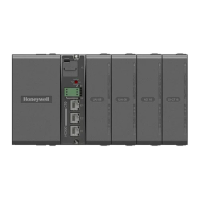
